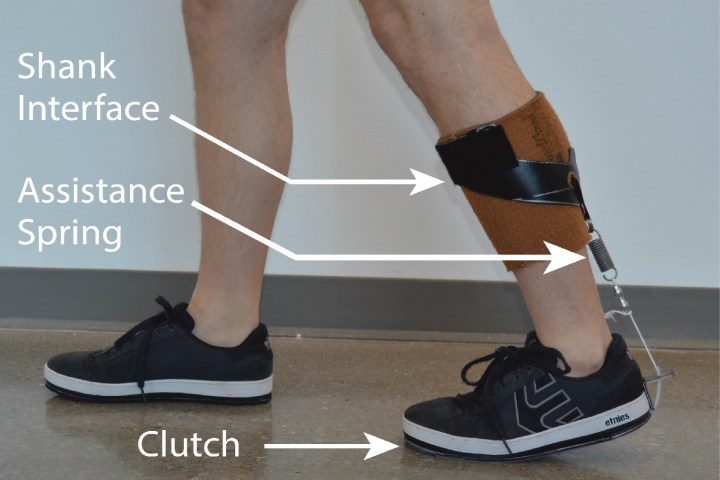
When it comes to robotic exoskeletons, many of the rigs on the market put the fact that users are wearing a mobile robot front and center. These are tools like LG’s SuitBot, supportive robot tech that’s as noticeable as having a muscular personal trainer spotting your every exercise in the gym. And why not? If the goal of these exosuits is to help workers carry out heavy lifting tasks in places like warehouses, a conspicuous wearable robot is just another type of uniform to be worn on the job.
But how about supportive tech that is designed to be utilized in everyday life, such as helping elderly people to walk when they have age-related impaired lower-leg muscle strength? In these scenarios, customers may well seek a lightweight, low-profile alternative; preferably one that can be worn under everyday clothing. That’s what mechanical engineering researchers from Vanderbilt University have created with a new ankle exoskeleton developed to help people to walk without fatiguing — and, crucially, without restricting natural motion or drawing attention to itself.
“In this project, we created a spring-powered exosuit — an unmotorized, soft exoskeleton — that can reduce loading on a person’s calf muscles as they ambulate,” Professor Karl Zelik, who worked on the project, told Digital Trends. “The device uses a novel under-the-foot clutch mechanism that we invented, and an extension spring that acts in parallel with the user’s calf muscles. As a person walks, some of the force that typically goes through their muscles is redirected and goes through the assistive spring instead. This reduces the muscle force and effort needed to walk.”
Zelik notes that the low cost (it can be produced for under $100) device weighs only one pound, is quiet, and contains no motors, batteries, or other components that protrude out from the body. To his knowledge, this is the first ankle exoskeleton that can be fully concealed under everyday clothing.
“We performed a series of characterization tests on the device itself to show it works, and then we tested it in human subject experiments in our instrumented motion analysis lab,” he continued. “In these laboratory experiments, we demonstrated that our prototype can reduce loading on the calf muscles, and can assist biological ankle function across a wide range of speeds.”
In addition to older people or those with disabilities, Zelik suggested that there are other potential audiences for the technology. These include runners or hikers, as well as those whose jobs involve large walking distances, such as postal workers or soldiers. The team is currently working toward possible commercialization of this and other types of “mechanized clothing.”
A paper describing the research was published in IEEE Transactions on Neural Systems and Rehabilitation Engineering.
Editors' Recommendations
- New VESA display standard makes it easier to pick a monitor
- Renpho teams up with MyFitnessPal to make smart tracking that much easier
- Ecovacs’ new Deebot X1 cleans your home and itself
- Exoskeletons with autopilot: A peek at the near future of wearable robotics
- Philips Hue makes it easier to manage smart lights with new module and switch


